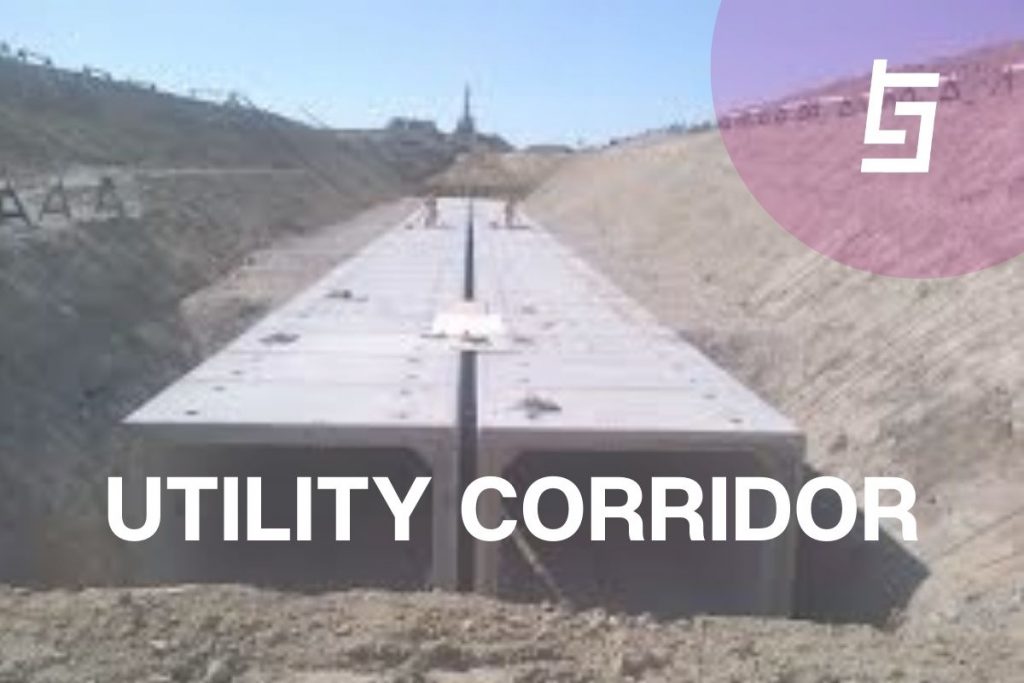Utility corridor is not a new concept in the developed and developing cities of the world. Many big cities have embraced planned urbanization with pre-built utility corridors that supply public utilities like water, electricity, telecom and internet lines, drainage, gas supplies, etc. However, this has just been a populist agenda of some leaders in Nepal to date.
If you remember Former Prime Minister K.P. Oli’s famous statement “Ghar Ghar ma gas ko pipeline puryauxau” in one of his public speeches (which even went viral among the public), it falls under the concept of utility corridor in the language of urban development.
Followed by that, some efforts have been initiated by the Ministry of Urban Development in terms of unified smart cities. In the annual progress report 2076/77 of the Ministry of Urban Development, the projects like road expansion and development and surface drainage have been accomplished beyond the target level.
What is the progress of the Ministry of Urban Development regarding Utility Corridor and other infrastructure?
According to the report, Asian Development Bank (ADB) has funded the project of urban development starting from 2069/70 B.S. and ending in 2076/77.
In regard to the annual target of completing 130 KM road improvement, a total of 213.36 KM road has been improved in the year 2076/77. Also, 253.95 KM of surface drainage has been built. However, the term “Utility Corridor” has not been coined in these papers.
This progress seems vague because of the prevailing coordination problems between the ministries and departments when it comes to infrastructure developments. The common practice of duplication of efforts by various ministries while setting up urban infrastructures like drainage, water supply, telecom and internet lines, etc has made it problematic for both the workers and the public.
For instance, the Department of Roads completes a road expansion project. No sooner has the project been completed, then the Telecommunications Authority has an urge to dig that road once again to set the telecom lines under the ground and so on.
This has not only elongated the time allocated for the given project but also wasted a huge chunk of government expenditure on the repetitive work.
Hence, the only solution is to construct Utility Corridors so as to provide utility services like water, electricity, drainage system, gas supplies, etc through a passage without disturbing other structures.
Let’s get to know what Utility Corridor means and how it works
Electrical, water supply, sewer, and – in the case of district heating – steam lines flow through a utility corridor, which is a subterranean walkway.
Utility lines can be grouped in a single, accessible place that can avoid conflicts between lines. Also, it reduces or eliminates trenching and manholes.
When communications utilities like as fiber optic, telephone, and television cables require renovations or repairs, utility corridors reduce the need to disturb traffic and other surface activity. Hence, it can solve the prevailing problem of road blockade while maintaining roads.
The utility corridor’s purpose is to facilitate quick access and quick repairs to the wiring, electricity, cables, and utility services that are grouped together in it. Civil engineers might know more about it but I have something to put here through my limited knowledge.
We can integrate various utility services through different ducts under its underground passage like:
- Domestic water and sewer
- Steam and heating
- Chilled water
- Electricity
- Gas and limited products
- Telecommunications and data
The utilities are provided through the source units to the individual houses or residential units, cities
The concept of the Utility Corridor perfectly aligns with the vision of developing smart cities in Nepal where the common utility services will be directly linked to the households through a passage that consists of separate pipelines for each supply.
For instance, let us revisit Oli’s populist agenda- “Gas Pipeline”. One of the popular setups under the utility corridor is that the gas pipelines are attached to each home, unlike the traditional method of refilling gas cylinders.
This is also being done by Urban Space in Nepal. It is a real estate company that is introducing a novel idea of housing by linking technology to the living experience. This is for the first time in Nepal where the housing units will be provided with automatic gas supplies. Also, the houses will be provided with central heating to warm up for the winter.
Some international examples of “Utility Corridor”
Various cities around the world have deployed the concept of a “Utility Corridor” thereby supplying the essential services and public utilities through a dedicated underground pipeline. Well, for the cities having big subways, it is not much difficult for setting up “Utility Corridors”. Some of the best examples that the cities got out the most of utility corridors are:
#1 Immokalee Road in Naples
Due to the high-volume traffic on this road, it was completely reconstructed by tying into the existing water lines to reach a new subdivision and installation of other utilities underground.
#2 New York Energy Solution (NYES) Project
The NYES project is going on where the existing urban settlement is supported by a 54-mile utility corridor through 11 towns in Columbia and Rensselaer.
#3 Utility Corridor in India
The Government of India has aimed to establish common service ducts and utility corridors in all new city and highway road projects. What’s new in this is that they are about to adopt a “Call Before You Dig” and “Dig Safe” policy which should encourage notifying the concerned utilities before the digging process begins, to prevent any damages or fiber cuts
The Government of Nepal also seems supportive of the formulation of the Utility Corridor Act; Kathmandu is becoming the first city with utility corridor in Nepal
Recently in a consultative seminar organized by the Ministry of Urban Development, Prime Minister Sher Bahadur Deuba has emphasized the importance of drafting a bill on urban development and utility corridors in order to coordinate the development and building projects.
He also demanded an end to the practice of one utility agency developing structures and the next disrupting them only a few days later due to a lack of coordination.
He shared,
“This will help in proper resource mobilization for the urban development as well as ensuring inter-governmental coordination and urban good governance.”
Also, President Bidhya Devi Bhandari announced that the government is making plans to build a utility corridor connecting Tribhuvan International Airport and Maitighar while presenting the government’s policy and program on Tuesday.
Nepali citizens have been hearing about effective urban development along with the construction of smart cities for a long time. In every recent economic plan, the concept of smart cities has been included.
Furthermore, the local government mobilization after the introduction of federalism has somehow supported meeting the targeted developments. Although most of the local governments have been successful in developing the roads, there is still a lot of room for improvement since those roads are again dismantled by other departments for their work.
This shows there is a lack of coordination between various departments and public utility service providers like the Nepal Electricity Authority, water supply units, telecommunication companies, internet service providers, and the Department of Roads. There must be a coordination between the local government, and various ministries and departments.
With the completion of local elections, Nepali citizens have a lot of expectations from the newly elected local-level leaders
The local elections have recently been concluded and all of the local levels have got their leaders. Amidst this scenario, the most popular local election concern was headed towards Kathmandu Metropolitan city since artist and structural engineer Balen Shah announced his candidacy for the mayor position.
The results are out and he has already won the position. Along with that, some other independent candidates like Harka Sampang from Dharan, Gopal Hamal in Dhangadhi etc have also won the mayor position.
I am taking these names because these people have a plan for serving the public by making easy access of public utilities. Harka Sampang Rai has been fighting alone for the proper management of drinking water supply in Dharan and other public issues.
Also, Balen too has a vision to make Kathmandu a technology enabled-smart city by maintaining proper disposal and management of wastage, utility management, corruption control etc. Not only them but all other elected local leaders can implement this concept of “Utility Corridor” to solidify their vision as per the manifesto to develop their local levels. And of course, they will need a proper coordination with the concerned departments, government units and ministries for that process.
Also Read: Make in Nepal Swadeshi Summit 2022; How capable are we in terms of production, trade, and export?






